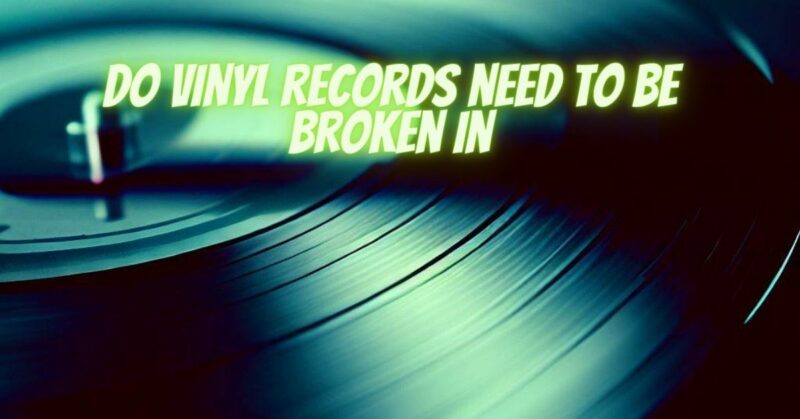Vinyl records have long been cherished for their unique sound and nostalgic appeal. As with any audio medium, there are various myths and misconceptions surrounding vinyl records. One common belief is that vinyl records need to be “broken in” to achieve their best sound quality. In this article, we will explore the concept of vinyl record break-in, dispel the myth, and delve into essential factors that affect vinyl playback.
Understanding Vinyl Records:
Vinyl records are made of polyvinyl chloride (PVC) and contain grooves that store the audio information. When a stylus (needle) is placed on the vinyl’s surface, it tracks the grooves, translating the physical vibrations into sound. This analog playback process is what gives vinyl its unique warmth and character.
Debunking the Break-In Myth:
The idea of breaking in vinyl records suggests that the first few plays or rotations somehow “condition” the grooves to improve sound quality over time. However, this notion is more of a myth than a reality. Vinyl records are mass-produced with high precision, and the grooves are consistent from the first play.
Vinyl records do not contain any “running-in” mechanism like mechanical devices. The sound quality you get from a vinyl record is largely determined by factors such as the recording quality, mastering, pressing, and the condition of the record itself. While vinyl records may undergo minor changes in sound quality with repeated plays due to surface cleaning and stylus wear, these changes are generally subtle and not related to any break-in process.
Factors Affecting Vinyl Playback:
- Record Quality: The quality of the recording, mastering, and pressing process plays a significant role in the sound quality of a vinyl record. High-quality recordings and well-mastered pressings will yield superior sound from the start.
- Vinyl Condition: The condition of the vinyl record, including any dust, debris, or surface scratches, can impact playback quality. Regular cleaning and proper handling can help maintain the record’s condition.
- Stylus Quality: The stylus’s condition and alignment are crucial for optimal playback. A well-maintained stylus that tracks the grooves correctly will deliver better sound reproduction.
- Turntable Setup: A properly set-up turntable with correct tracking force, anti-skate, and alignment is essential for accurate playback and sound quality.
Maximizing Vinyl Playback:
To maximize the sound quality of your vinyl records, consider the following tips:
- Invest in High-Quality Pressings: Choose well-mastered and high-quality pressings for superior sound.
- Proper Cleaning: Regularly clean your vinyl records using appropriate cleaning methods to remove dust and debris.
- Stylus Care: Clean and replace your stylus regularly to ensure accurate tracking and prevent groove damage.
- Turntable Setup: Set up your turntable correctly to achieve accurate tracking and avoid unnecessary wear on the grooves.
In summary, vinyl records do not require a break-in period for optimal sound quality. The idea of “breaking in” vinyl records is a myth, and the sound quality is primarily determined by factors such as recording quality, mastering, pressing, and the condition of the record itself. To enjoy the best sound from your vinyl records, invest in high-quality pressings, practice proper record cleaning and stylus care, and ensure a well-set-up turntable. With these considerations in mind, you can immerse yourself in the captivating world of vinyl playback and appreciate the unique and timeless charm of vinyl records.


